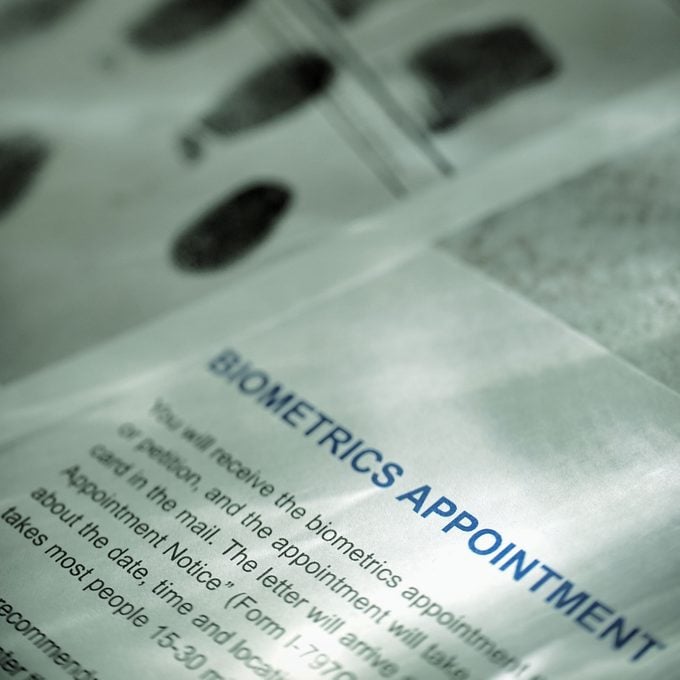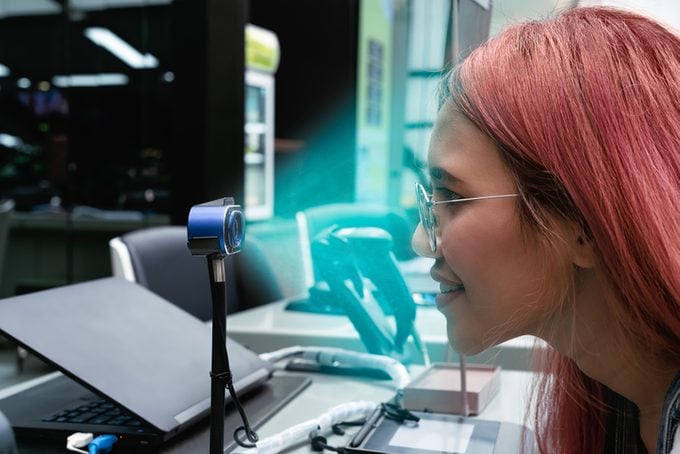What Is a Biometric Passport and When Will We Have Them?
Updated: Jan. 03, 2024

Biometric passports are here, making travel not only safer but more convenient.
Imagine the ease of automated facial recognition as well as not having to fumble for your passport when you walk through immigration at an airport. Well, we could be even closer to that reality in the United States.
Passports are an important form of documentation, regardless of what passport color you have, which depends on the country you call home. Some powerful passports even ensure you don’t need a visa for a large part of the world. Even if you don’t have immediate plans to travel abroad, having a passport is a good idea because it can take a few months to get one.
Biometric passports incorporate biometric technology for both increased security and convenience while traveling. These passports eliminate lines and allow for a smoother process from the check-in counter to the boarding gate.
What are biometrics?

Biometrics are unique physical characteristics—such as fingerprints, facial recognition, iris scans and voice recognition—that can be used for automated recognition and to help prevent fraud and identity theft. “This is similar technology to what your phone may use to let you play your music while restricting others from doing the same,” explains Jason Oeltjen, VP of Product Management for Ping Identity, a leading identity management provider.
“Biometrics refers to a system of measurements related to human characteristics and is used as a form of identification, from transactions to security, because of its foolproof advantage,” explains Andrew Novoselsky, CPO at Sumsub, an all-in-one verification platform. There are two types of biometrics authentication: physical and behavioral identifiers, which Novoselsky breaks down:
Physical identifiers are a certain fixed set of human characteristics:
- Voice recognition is used by some telephone-based and digital service portals to authenticate customers.
- Fingerprint scans are a way of confirming user identity and have become immensely popular in recent years due to their deployment on smartphones. It is also the most common type of biometric authentication.
- DNA scans are too slow to be implemented in the fast business environment and are commonly used in law enforcement to identify suspects.
- Signatures are quite common at retail checkouts and in banks where customers are already expecting to be asked to sign their names.
- Facial recognition which requires a photo/video of a person is an approach with growing popularity among services that need to confirm client identity online.
Behavioral identifiers are highly customizable and can be adjusted for specific businesses. These are the ways behavioral identifiers help companies filter out spam and separate a human from a bot:
- Physical movements are sometimes used to confirm a person’s identity online when asking users to move in a certain way and compare the request to what the system detects in front of the sensor.
- Typing style can be screened for a recognizable pattern match.
- Engagement patterns differ from person to person, including how an individual interacts with a technology, where they click and what apps they use.
What is a biometric passport?
A biometric passport is often referred to as an Electronic Passport or e-Passport. “An ePassport includes all of the information found on a physical passport as well as biometric identifiers (fingerprint, face, iris) about the individual stored on an RFID chip embedded into the passport document,” explains Lisa Shoemaker, Vice President, Corporate Relations at IDEMIA, a company that provides identity security and authentication services to governments and private companies operating in North America.
“Biometric Passports allow NFC (near-field communication)-based verification, contactless technology that enables objects to communicate at a range of about 5 cm,” Novoselsky explains.
What is the purpose of a biometric passport?

Biometric passports serve two purposes. “First, they make the process of identity verification faster and more convenient, as a quick scan of the microchip can compare the identity of the holder and the passport,” explains Giulia Di Nola, Senior Product Manager of Biometrics at Onfido. “It also makes the process more secure. If your passport is stolen, the biometric verification prevents someone else from being able to use it.”
“Convenience and security are the top reasons for having an ePassport,” Shoemaker says. “An ePassport protects against identity theft and fraud and is extremely secure.”
In short: fraudsters and criminals face a bigger challenge than before, which is good news for all of us.
What countries currently use biometric passports?
One hundred sixty-four countries have passports with a contactless (NFC) chip. “Malaysia was the first country to issue biometric passports in 1998,” Novoselsky says. “In addition, some national identity cards, such as those from the Netherlands, Albania and Brazil, are compliant biometric travel documents.”
Sources:
- Department of State, Next Generation Passport
- Jason Oeltjen, VP of Product Management for Ping Identity, a leading identity management provider
- Andrew Novoselsky, CPO at Sumsub
- Department of Homeland Security, e-passports
- Lisa Shoemaker, Vice President, Corporate Relations at IDEMIA
- Giulia Di Nola, Senior Product Manager of Biometrics at Onfido



















